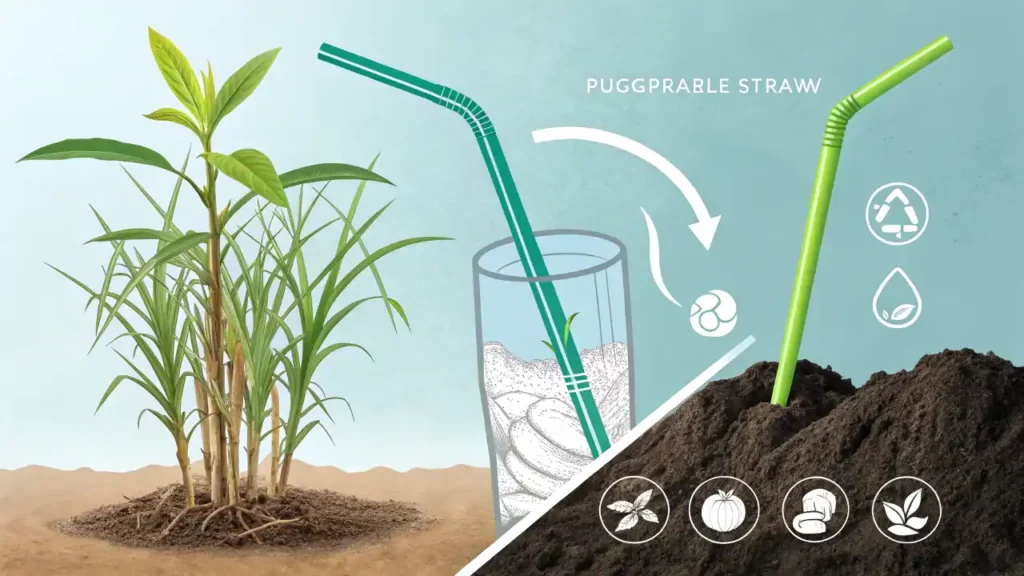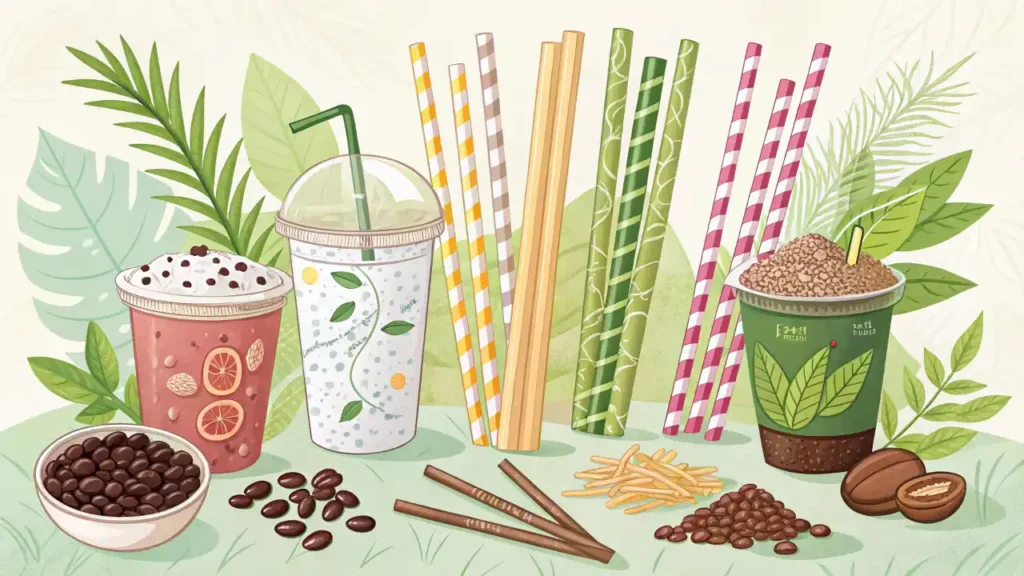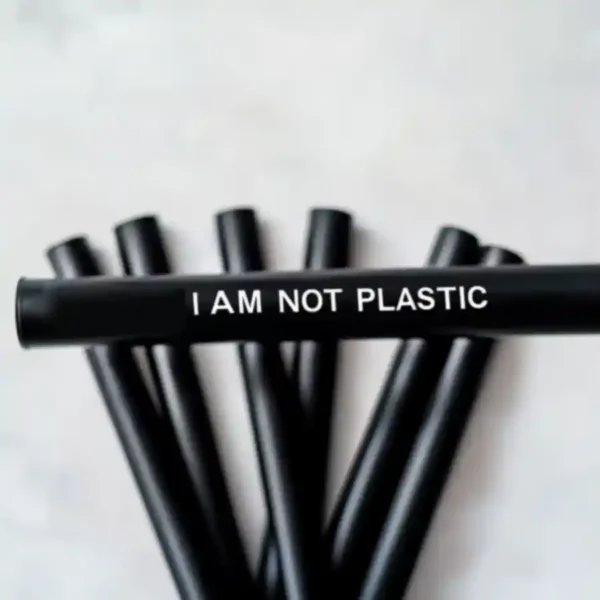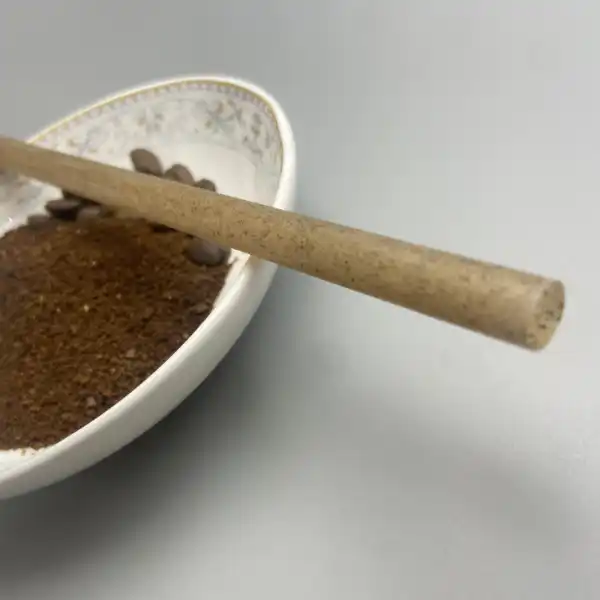ভূমিকা
The environmental impact of single-use plastics is a growing concern, and restaurants play a vital role in addressing this issue. Switching to biodegradable straws is an effective step towards sustainability. This guide will provide you with actionable steps to incorporate biodegradable straws into your restaurant operations, drawing from various resources and expert advice.

Step 1: Understanding the Problem
Plastic Straws and the Environment:
Traditional plastic straws contribute significantly to pollution, taking hundreds of years to decompose and harming marine life. They break down into microplastics that contaminate ecosystems and food chains.
The Need for Alternatives:
Given these issues, it is crucial for businesses to explore sustainable options. Biodegradable straws offer a practical and eco-friendly solution.
Step 2: Exploring Biodegradable Straw Options
- Paper Straws: Made from FDA-approved paper, these straws are biodegradable and compostable. They decompose relatively quickly and are a good alternative to plastic.
- Bamboo Straws: Created from a rapidly renewable resource, bamboo straws are 100% biodegradable and compostable. They are durable and reusable.
- Sugarcane Straws: Made from sugarcane fiber, these straws are durable and compostable. Learn more about customizable sugarcane straws that cater to your branding needs.
- Grass Straws: Made from 100% sedge grass, these straws are durable and biodegradable. They also provide a unique tea aroma.
- Coffee Straws: These straws, made from coffee grounds, offer a delicate coffee aroma and taste. Check out individually wrapped boba coffee grounds straws for practical options.
- Rice Straws: Created from rice and tapioca starch, rice straws are compostable and quick to biodegrade. They can even be consumed as a snack after use.
- Marine Biodegradable Straws: Designed to break down in marine environments, these straws are typically made from materials like PHA, which are particularly effective for coastal businesses.
Step 3: Choosing the Right Biodegradable Straws for Your Restaurant
- Consider your needs: Assess your typical straw usage, the types of beverages you serve, and customer preferences. For cocktail options, explore eco-friendly cocktail coffee grounds straws।
- Variety is key: Offer a range of options to cater to different needs, such as wider straws for boba drinks and standard sizes for other beverages.
- Sample the options: Test out different types of straws to ensure they meet your standards for durability and customer satisfaction.
Step 4: Sourcing and Purchasing Biodegradable Straws
- Bulk Buying: Purchase straws in large quantities to reduce costs and maintain a steady supply. Explore these compostable straws for your restaurant।
- Ethical Sourcing: Choose suppliers who prioritize ethical practices, ensuring that materials are harvested responsibly.
- Reliable Suppliers: Partner with suppliers that are certified to guarantee they meet quality and safety standards.
Step 5: Implementing Biodegradable Straws in Your Restaurant
- Staff Training: Educate your staff on the benefits of biodegradable straws and how to use them correctly.
- Customer Education: Use signage and social media to inform your customers about your sustainability efforts. Learn more about sustainability practices from Hay Straws।
- Marketing: Promote your commitment to sustainability to attract eco-conscious customers and build brand loyalty.
Step 6: Marketing and Promoting Your Eco-Friendly Initiatives
- Highlight Sustainability: Focus your promotions on the environmental benefits of your straws.
- Social Media: Engage customers using social media to showcase your eco-friendly practices.
- Customer Feedback: Encourage customers to share their experiences and offer testimonials.
- Customization: Consider custom-printed sugarcane straws with your logo to further enhance your brand.
Step 7: Addressing Challenges
- Cost: Communicate the long-term environmental and social benefits to justify higher costs. Bulk buying can help reduce costs.
- Customer Misconceptions: Provide clear information on the proper use, cleaning, and sourcing of your biodegradable straws.
Explore more on The Sugarcane Straw website। - Hygiene: Ensure straws are stored and handled hygienically to meet health and safety standards.
Step 8: Continuous Improvement
- Evaluate: Regularly assess customer feedback and track the impact of your initiatives. Refer to UrthPact’s straw sustainability guide।
- Innovate: Stay updated on new and improved biodegradable straw options.
- Collaborate: Partner with environmental organizations and other businesses to further enhance sustainability efforts.
উপসংহার
Switching to biodegradable straws is an important step for your restaurant to become more environmentally responsible. By following these steps, you can not only reduce plastic waste and protect the environment but also enhance your brand image and attract environmentally conscious customers. Embrace sustainability and contribute to a better future.
Frequently Asked Questions (FAQ)
- বায়োডেগ্রেডেবল স্ট্রগুলি কী দিয়ে তৈরি?
Biodegradable straws are made from plant-based materials such as paper, bamboo, grass, rice, sugarcane, and wheat. - Where can I purchase biodegradable straws?
Biodegradable straws are available from suppliers like প্রকৃতিবিওকো, Hay Straws, and The Sugarcane Straw। - How should biodegradable straws be cleaned?
Bamboo straws should be rinsed with warm water and cleaned with a small brush. Paper straws are single-use. - Are biodegradable straws safe?
Yes, they are made from natural, chemical-free materials and are safe for use. - Can biodegradable straws be composted?
Yes, materials like sugarcane, bamboo, and paper are compostable.
Integrated Links
Internal Links:
- কাস্টমাইজযোগ্য আখের খড়
- Individually Wrapped Boba Coffee Grounds Straws
- Eco-Friendly Cocktail Coffee Grounds Straws







